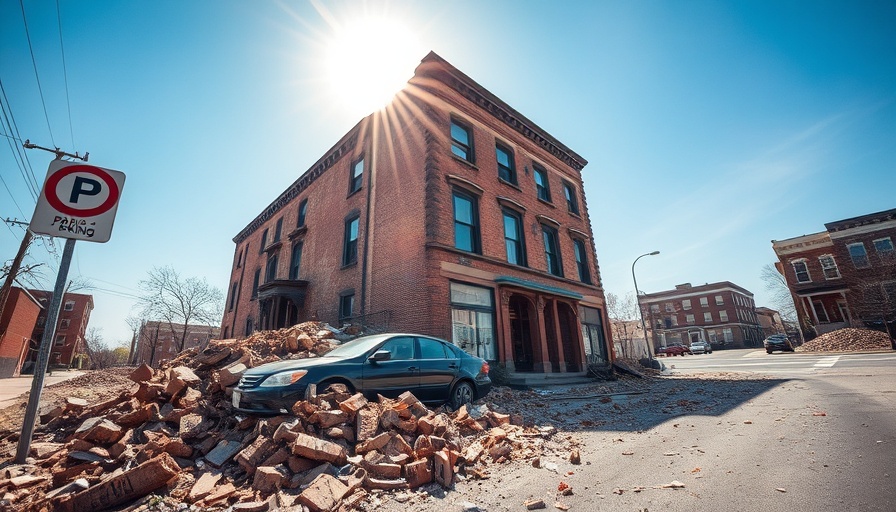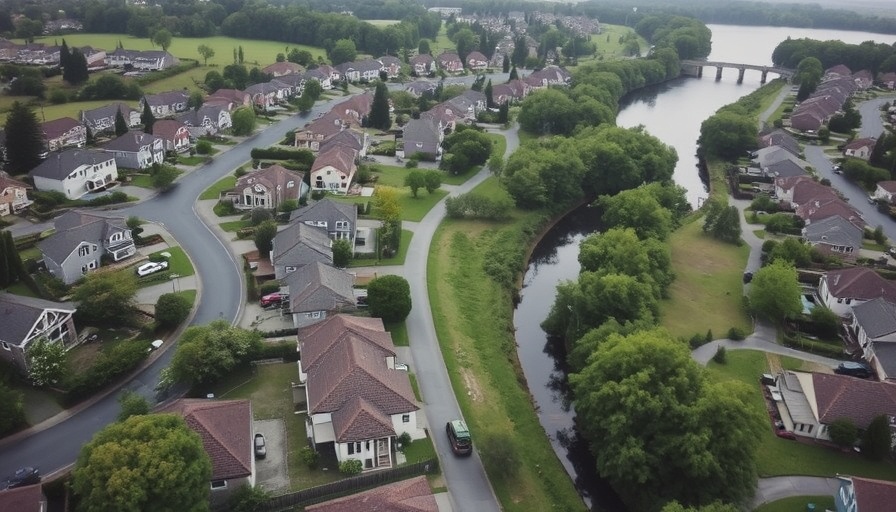
Tragedy Strikes as Tornado Devastates St. Louis
At least four lives were lost in St. Louis when a severe storm, likely enhanced by tornado conditions, swept through the city on May 16, 2025. This shocking tragedy left locals grappling with the loss of life and the destruction of property, calling attention to both immediate concerns and broader implications for storm preparedness and community resilience.
What Happened During the Storm?
The ferocious weather event struck St. Louis around 2:30 p.m., leveling structures and causing widespread havoc. The tornado was confirmed to have touched down across several neighborhoods, with significant destruction noted in Clayton and Forest Park, home to many families and attractions. Eyewitnesses reported harrowing conditions—high winds uprooting trees, ripping roofs off homes, and trapping individuals in damaged buildings.
A Community in Mourning
St. Louis Mayor Cara Spencer expressed her heartfelt sorrow during a press briefing, stating, "This is truly, truly devastating." The community's loss hits particularly hard at the Centennial Christian Church, where part of the structure collapsed. Among the deceased was Patricia Penelton, a beloved community member remembered for her vibrant role in church activities. Her son-in-law echoed the sentiments of loss, urging those in the area to pray for the church and its members.
Storm Preparation and Community Resilience
This recent storm is a stark reminder of the growing frequency of severe weather patterns, raising critical questions about urban planning and emergency readiness. As climate change intensifies weather events across the United States, communities must understand the need for improved shelter systems and emergency response strategies. Local organizations and the government must come together to develop extensive education programs focused on disaster preparedness, including how to react when alerts are issued.
Local Heroes: The Response Team
In the face of adversity, local firefighters, rescue teams, and community volunteers stepped up, conducting searches and rescue operations amidst the rubble. Fire Chief William Pollihan reported the rescue of three individuals trapped under the remnants of the church—showcasing the heroism and commitment of responders as they navigated hazardous conditions to save lives. Such dedication highlights the importance of support networks during crises, bringing hope to a grieving community.
The Bigger Picture: Weather Patterns and Policy Changes
Experts have warned that cities across the Midwest can expect more frequent severe weather phenomena in the future. This trend calls for actionable insights from policymakers and local government. Conversations surrounding infrastructure investment must include storm water management and green building initiatives that can mitigate damage and flooding during storms.
A Call for Action and Reflection
In the aftermath of such events, community engagement is vital. Residents should consider taking part in local forums addressing disaster readiness strategies and community resilience. Whether through attending city council meetings, volunteering for neighborhood watch measures, or joining environmental advocacy groups, every action counts toward building a stronger, safer community.
The devastation wrought by this storm goes beyond physical damage; it serves as a sobering reminder of our shared vulnerability. Therefore, in these challenging times, it remains essential to foster connections within the community, spark conversations around safety norms, and continue to support one another in recovery efforts.
Conclusion: Moving Forward Together
As St. Louis begins its journey to recovery, the focus must remain on collective healing and preparation for future weather events. Let's turn our grief into action and foster a community that stands strong in the face of adversity.
 Add Row
Add Row  Add
Add 






Write A Comment